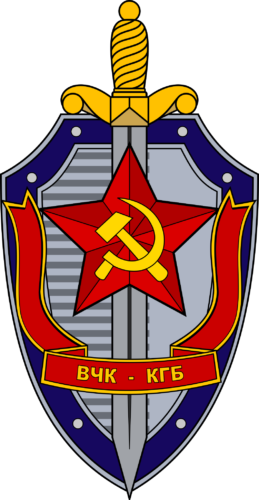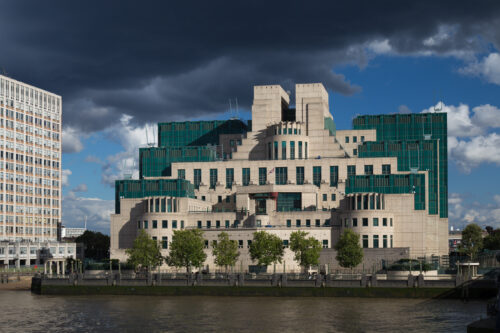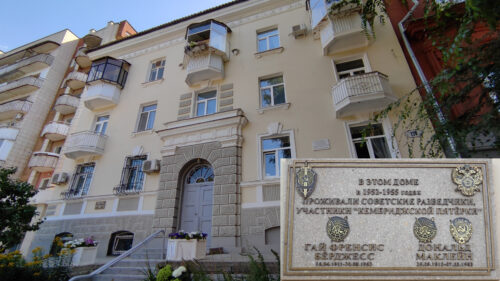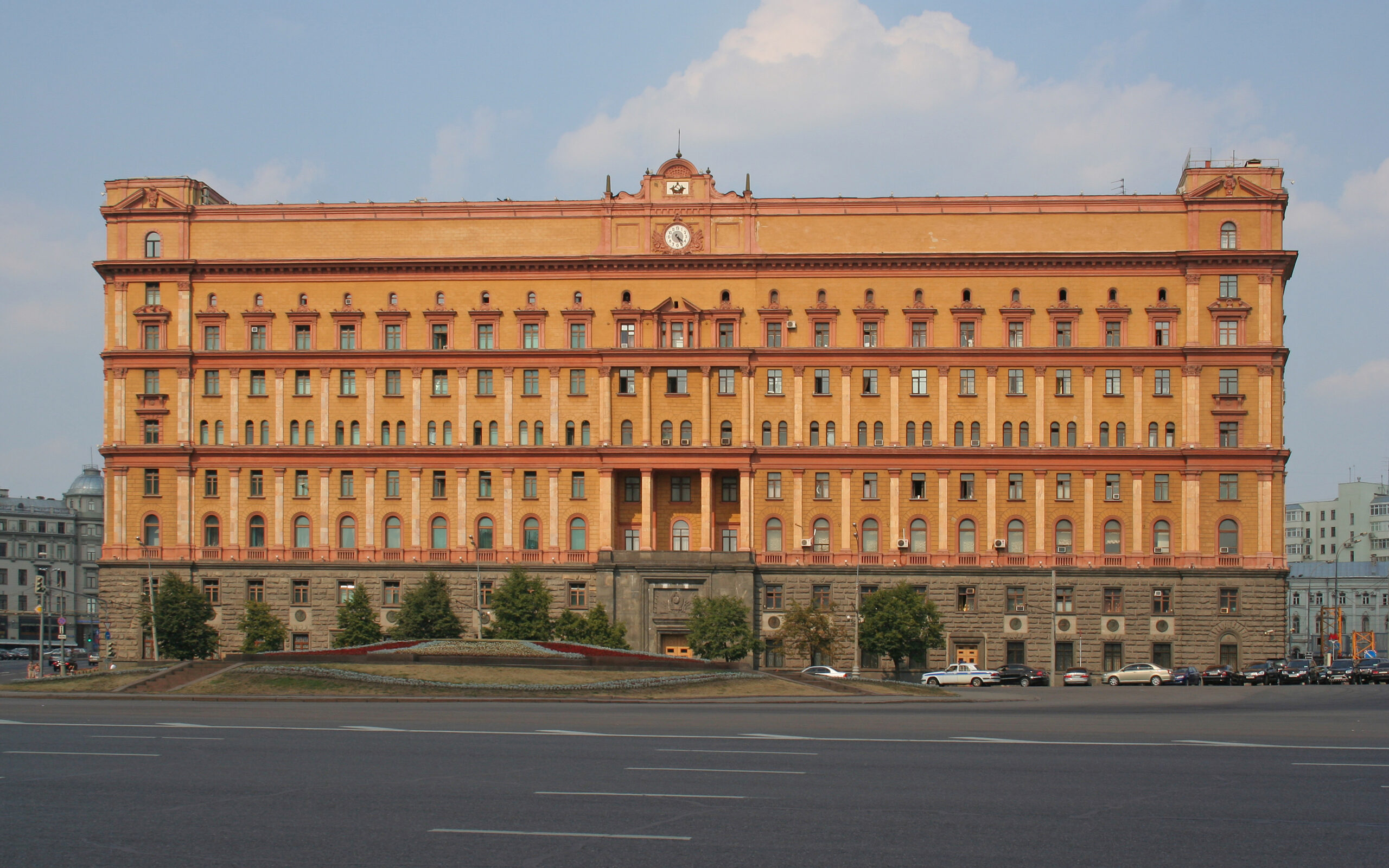The Lubyanka building (former KGB headquarters) in Moscow. Credit: A. Savin / CC BY-SA 3.0 DEED.
The “Mitrokhin Archive” is a vast collection of handwritten notes, primary sources, and official documents that were covertly created, smuggled out, and concealed by Vasili Mitrokhin (March 3, 1922 – January 23, 2004), who was a major and senior archivist in the Soviet KGB.
The Archive’s Origins
Vasili Mitrokhin, who served as a KGB archivist in the foreign intelligence service and the First Chief Directorate for three decades, began his career in undercover operations within the First Chief Directorate of the KGB. Following Nikita Khrushchev’s Secret Speech, Mitrokhin developed a critical view of the KGB system and was subsequently reassigned from Operations to the Archives.
As the years passed, Mitrokhin’s disillusionment with the Soviet system deepened, particularly after hearing about the struggles of dissidents and the 1968 Warsaw Pact invasion of Czechoslovakia. These events led him to the conclusion that the Soviet system was beyond reform.

The Covert Notes
By the late 1960s, the KGB headquarters at the Lubyanka Building was becoming increasingly congested. In response, Yuri Andropov, the Chairman of the KGB, authorized the construction of a new building in Yasenevo, outside of Moscow. This new building was set to become the new headquarters of the First Chief Directorate and all Foreign Operations.
Mitrokhin, who had by then become the head of the Archives department, was tasked by Vladimir Kryuchkov, the director of the First Directorate, with cataloging the documents and supervising their systematic transfer to the new headquarters. This massive undertaking spanned over 12 years, from 1972 to 1984.
While cataloging the documents, Mitrokhin secretly copied them by hand, creating highly detailed notes. He smuggled these notes to his dacha and hid them under the floorboards, unbeknownst to Kryuchkov and the KGB.
Defection to the UK
During the Soviet Era, Mitrokhin made no attempts to contact any Western intelligence service. However, following the dissolution of the Soviet Union in 1992, he traveled to Latvia with copies of material from the archive and approached the American embassy in Riga. When he defected to the United Kingdom in 1992, he brought the archive with him, packed in six full trunks which he provided to the British Secret Intelligence Service (SIS), also known as MI6. His defection was not officially disclosed until 1999.

The Archive’s Impact
Christopher Andrew, the official historian of the British Security Service (also known as MI5), wrote two books, The Sword and the Shield (1999) and The World Was Going Our Way: The KGB and the Battle for the Third World (2005), based on the materials in the archives. These books offer insights into many of the Soviet Union’s clandestine intelligence operations worldwide.
In July 2014, the Churchill Archives Centre at Churchill College made Mitrokhin’s edited Russian-language notes available for public research. However, Vasili Mitrokhin’s original handwritten notes remain classified.
One of the key figures highlighted in the archive is Guy Burgess, a British diplomat and Soviet double-agent who had a brief stint with MI6 and was a member of the Cambridge Five spy ring. The archive reveals that Burgess handed over a staggering number of top-secret documents to the KGB—389 in the first half of 1945 and another 168 in December 1949.

Folder 70
The Chekist Anthology, specifically Folder 70 of the Mitrokhin Archive, provides a snapshot of various KGB operations that took place from the early 1960s to the late 1970s. Here are some examples:
One such operation, codenamed “Grom” (Thunder), involved the creation of a counterfeit US State Department memo that discussed the propensity of Soviet citizens towards treason and how the US could leverage this. This fabricated memo was prominently featured on the front page of the British newspaper, the Daily Express.
Another operation saw the creation of a pamphlet by the KGB, which was attributed to the neo-Nazi terrorist organization BAS (South Tyrolean Liberation Committee). This pamphlet was used as evidence in the trial of BAS leader Norbert Burger in Austria.
In July 1976, the KGB’s Singapore residency conducted surveillance on Chess Grandmaster Boris Spassky during his visit to Singapore. The report noted that Spassky spent a significant amount of his leisure time playing tennis.
The KGB also created and distributed a letter, purportedly from nationalist Ukrainian emigrants, which protested against the French government’s cooperation with Zionists and threatened reprisals against French Zionists.
In Austria, the KGB residency orchestrated an operation known as “Bonga” (Bigwig), which involved the production of forged letters allegedly from Chairman Mao. These letters suggested that Mao was the driving force behind the opposition to Hua Guofeng’s reforms and hinted at a potential shift in China’s political direction.
In March 1977, the Austrian Communist Party’s newspaper published a translation of a confidential Chilean document. This document contained a request from the Chilean secret police to Gen. Augusto Pinochet for additional funds to conduct covert operations abroad. Pinochet’s response was a stern rebuke of the request and a strong warning against carrying out clandestine operations abroad. The origin of the document and its authenticity were not disclosed by Mitrokhin.
To Sum Up
The Mitrokhin Archive offers a unique and incredibly detailed glimpse into the operations of the KGB during the Cold War. It continues to be an invaluable resource for historians and researchers studying this period.
Resources
Churchill Archives Centre
Churchill Archives Centre (cam.ac.uk)
Wilson Center
WilsonCenter.org
*The views and opinions expressed on this website are solely those of the original authors and contributors. These views and opinions do not necessarily represent those of Spotter Up Magazine, the administrative staff, and/or any/all contributors to this site.
